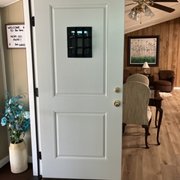Orange County, nestled in Southern California, has experienced a rich blend of architectural and design influences throughout its history. Originating from its Spanish and Mexican roots, the region initially exhibited Mission Revival and Spanish Colonial Revival styles, evident in the adobe houses and mission churches.
As it progressed into the 20th century, the county saw an influx of styles, from Craftsman bungalows to iconic mid-century modern homes, reflecting its residents’ rapid growth and changing tastes.
Orange County’s housing market has been dynamic, often as a significant factor in homeowners’ remodeling decisions. During boom periods, homeowners have leaned toward expansive renovations to increase property values or cater to the county’s upscale market segment.
On the other hand, during more challenging economic times, remodeling projects have typically been about functionality and ensuring homes meet contemporary standards. The county’s evolving demographics and geographic desirability near the coast have perpetually influenced the trends and demands within the home improvement industry.
Evolution of Remodeling Trends in Orange County
The remodeling trends in Orange County reflect its diverse influences and economic shifts over the decades. During the early 20th century, as the region began to urbanize, many homeowners were inspired by the Spanish Revival styles, giving their homes terracotta tiles, ornate ironworks, and arched doorways. The Craftsman era followed this in the 1920s and 1930s when homes began to showcase detailed woodwork, built-in furniture, and a general emphasis on artisanal craftsmanship.
By the 1950s and 1960s, Orange County saw a surge in the development of mid-century modern homes, characterized by their clean lines, flat planes, and large glass windows, signifying a shift towards minimalism and a seamless integration of indoor and outdoor spaces. The subsequent decades brought more variety, from the luxury of the 80s, marked by larger homes with grand staircases and vaulted ceilings, to the 90s and early 2000s’ focus on open-concept spaces and multifunctional rooms.
In recent years, there’s been a noticeable lean towards sustainable remodeling, with homeowners opting for energy-efficient appliances, green materials, and designs that reduce environmental impact. Each phase of these remodeling trends mirrors the aesthetic preferences of the times, socio-economic conditions, technological advancements, and the ever-evolving lifestyle needs of Orange County’s residents.
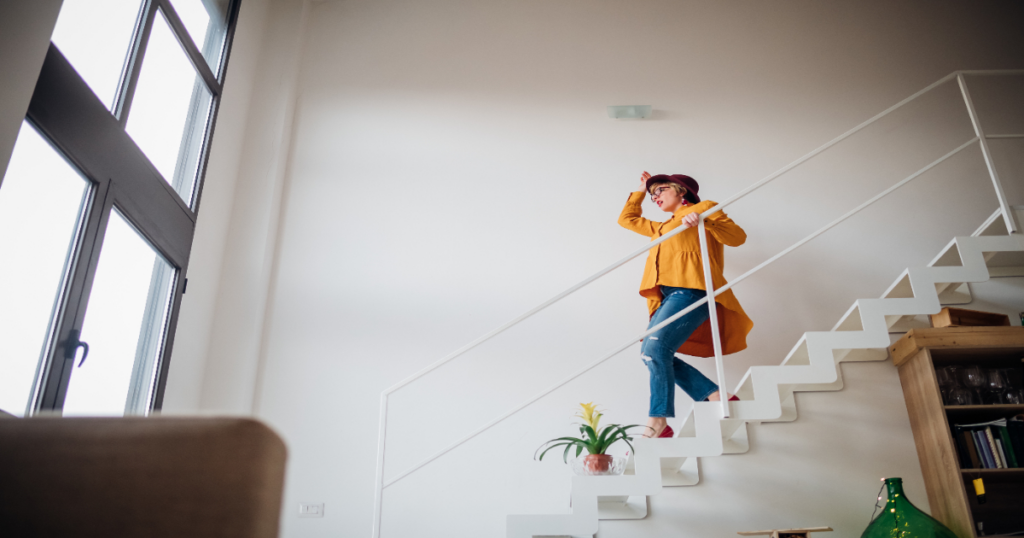
Current Popular Remodeling Trends
Open-concept Living Spaces
Open-concept living spaces have taken center stage in contemporary home designs, especially in areas like Orange County, where the blend of indoor and outdoor living is highly sought. These designs break down traditional walls, allowing house areas to flow seamlessly into one another. This approach creates a sense of spaciousness and fosters social interactions, making it easier for families and guests to connect without being confined to a single room.
Incorporating patio covers into the open-concept design elevates this trend further. Patio covers provide shade from the elements, allowing homeowners to extend their living spaces outdoors. Especially in the sunny climes of Orange County, a covered patio becomes an extension of the indoor space, blurring the lines between inside and out. It offers a comfortable area for lounging, dining, or even setting up an outdoor kitchen, maximizing the property’s usable space.
This combination of open interiors and covered exteriors responds to the modern homeowner’s desire for versatility, adaptability, and a strong connection to the surrounding environment. As a bonus, patio covers can be aesthetically pleasing and functional, potentially increasing the property’s value and curb appeal.
Outdoor Living and Entertainment Areas
In the contemporary home remodeling scene, especially in locations with favorable climates like Orange County, outdoor living and entertainment areas have emerged as dominant trends. Homeowners increasingly view their outdoor spaces as yards and extensions of their living rooms, dining areas, and kitchens.
These transformed spaces often feature comfortable seating arrangements with plush cushions and fire pits or outdoor fireplaces, creating cozy environments for evening gatherings. Modern outdoor kitchens, equipped with state-of-the-art grills, pizza ovens, and even wine coolers, have become common, enabling homeowners to cook and dine al fresco without multiple trips inside.
In addition to cooking and dining amenities, entertainment features like weatherproof televisions, sound systems, and even outdoor home theaters are being integrated. Some homeowners add swimming pools with swim-up bars, hot tubs, or even full-fledged outdoor game rooms with pool tables and other recreational equipment.
The emphasis on outdoor living also extends to landscaping. Many are opting for drought-resistant plants, water features, and artistic landscape lighting, further enhancing the ambiance of these outdoor retreats.
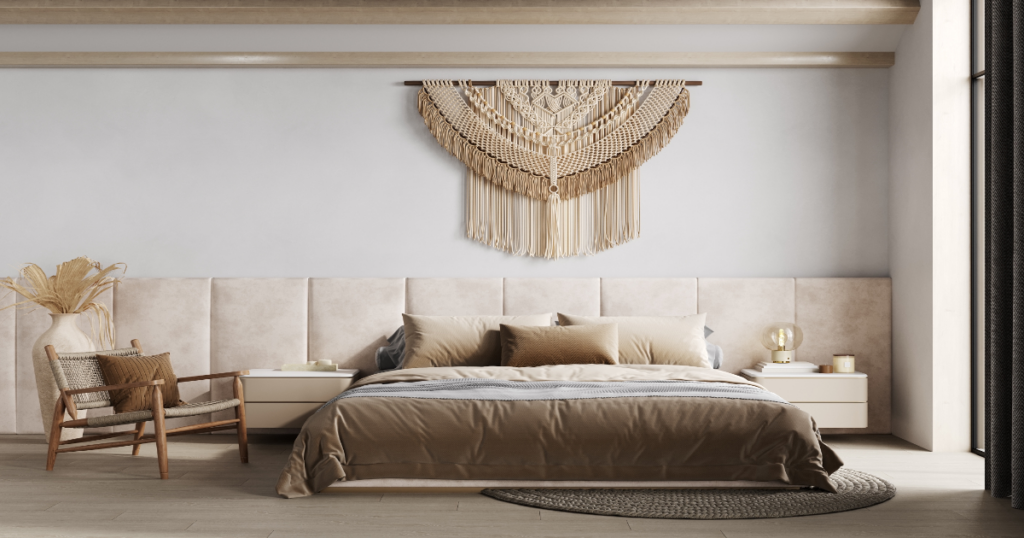
Energy-efficient and Sustainable Home Improvements
The modern homeowner’s quest for reduced energy consumption and a smaller carbon footprint reshapes the remodeling industry. A paramount trend in places like Orange County is the shift towards energy-efficient and sustainable home improvements. These upgrades are not just environmentally friendly but also offer long-term cost savings.
Among the most notable improvements is the adoption of energy-efficient windows. These are not your average windows; they have advanced features like double or triple glazing, low-E (low emissivity) coatings, and insulating gas fills between panes. The result? A significant reduction in heat transfer leads to consistent indoor temperatures regardless of the season. This means homes are cooler during the scorching summer months and warmer during chilly winters, all while consuming less energy. Moreover, these windows can block harmful ultraviolet rays, protecting the home’s interiors from sun-induced fading.
In tandem with these windows, homeowners are gravitating towards other sustainable upgrades. Solar panels are becoming standard installations, converting sunlight into electricity and slashing utility bills. Green roofs, insulation upgrades, and water-saving fixtures are also gaining traction, emphasizing a holistic approach to eco-friendly living. Collectively, these remodeling choices underscore a conscious move towards homes that are comfortable, aesthetically pleasing, and kind to the planet and the wallet.
Smart Home Integration and Technological Upgrades
The era of smart homes is upon us, revolutionizing how we live, interact, and relax within our personal spaces. Especially in regions like Orange County, the shift towards smart home integration has transformed houses into interconnected hubs of efficiency and convenience. These modern homes come equipped with centralized systems, often controlled by smartphones or voice-activated assistants, that seamlessly manage everything from temperature to security.
Programmable thermostats learn and adapt to residents’ routines, optimizing energy use, while smart lighting systems offer customizable atmospheres, enhancing mood and function. Beyond mere comfort, these technological upgrades prioritize safety with advanced surveillance features like doorbell cameras and intelligent alarm systems that give homeowners real-time alerts and peace of mind.
In the realm of entertainment, the leap is equally impressive. Advanced home theater setups paired with integrated sound systems have turned living rooms into cinematic experiences, with voice commands or a simple tap on a screen setting the scene. Even daily chores have seen an upgrade. Smart appliances in kitchens and laundry rooms predict needs, automate tasks, and even provide helpful reminders, merging functionality with futuristic flair.
This overarching move towards tech-integrated homes signifies more than just a trend. It captures the essence of our times—a harmonious blend of tradition and innovation, aiming to elevate daily life through the power of technology.
Spa-like Bathroom Retreats
In recent years, the bathroom has transitioned from a purely functional space to a sanctuary of relaxation and rejuvenation. The trend towards spa-like bathroom retreats has gained significant traction, Particularly in Orange County, where homeowners increasingly seek luxury and comfort in their living spaces.
The essence of this trend lies in creating a serene, hotel-inspired ambiance that promises relaxation after a long day. Standalone soaking tubs, often with air jets or hydrotherapy features, have become focal points, providing a space for indulgence. Walk-in showers equipped with rain showerheads, body sprays, and even steam functions add to this luxurious experience, turning daily routines into moments of bliss.
Natural materials like stone, teak, and bamboo play pivotal roles in these designs, introducing an element of nature that enhances the spa-like feel. Neutral color palettes and soft, ambient lighting further accentuate the calming atmosphere. Underfoot, heated flooring has become a sought-after addition, offering warmth and luxury.
Functional features haven’t been overlooked. Floating vanities with deep sinks and wall-mounted faucets ensure practicality while maximizing floor space for a more open feel. To complete the experience, integrated sound systems play soothing tunes, and niches or shelves are thoughtfully placed, housing scented candles, essential oils, and luxury bath products.
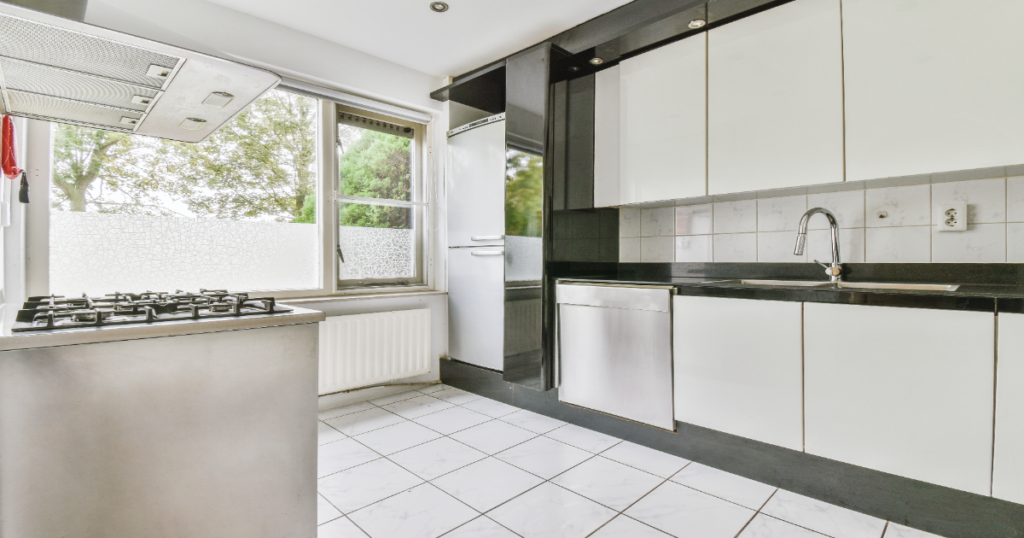
Modernized Kitchens with Updated Appliances and Finishes
Kitchens, often dubbed the heart of the home, have witnessed a significant transformation in recent years. As homeowners in places like Orange County prioritize both functionality and aesthetics, the trend has distinctly moved towards modernized kitchens equipped with the latest appliances and finishes.
At the forefront of this trend are state-of-the-art appliances that marry technology with design. Smart refrigerators that can suggest recipes based on their contents, ovens controlled remotely via smartphone apps, and induction cooktops that ensure rapid, even heating have become staples in modern kitchens. These appliances simplify cooking tasks and offer energy-saving benefits, aligning with the broader sustainability trend.
The aesthetics of these kitchens lean towards clean lines and uncluttered spaces. Flat-panel cabinet doors dominate the scene, often without visible hardware, providing a sleek and minimalist look. Using mixed materials, like combining quartz countertops with natural wood islands, introduces texture and visual interest. Backsplashes are no longer just protective; using materials like subway tiles, geometric patterns, or even full slab marbles, they’ve become statement pieces in their own right.
Lighting, too, has evolved. Pendant lights over islands, under-cabinet LED strips, and integrated lighting within open shelving units provide layers of illumination, serving both functional and decorative purposes. The color palette typically revolves around neutrals, accented occasionally with bold hues or metallic finishes for hardware and fixtures.
Moreover, storage solutions have become ingenious. Custom cabinetry often includes pull-out racks, deep drawers, and built-in dividers, maximizing space utilization. Integrated appliances, where fridges or dishwashers blend seamlessly with cabinetry, enhance the streamlined look.
Factors Driving the Current Trends
Changing Family Dynamics and Needs
The evolution of family structures, with multigenerational households and changing lifestyles, has directly influenced home remodeling. Spaces are now being designed for adaptability, accommodating home offices, larger communal areas, and private retreats catering to the needs of modern families.
Advancements in Construction Materials and Technologies
The construction industry has seen groundbreaking innovations, from durable, lightweight materials to prefabrication techniques. These advancements allow quicker, cost-effective builds and offer various design possibilities, driving homeowners to update or remodel with the latest available options.
Societal Shifts Towards Sustainability and Eco-friendliness
With growing awareness about environmental concerns, homeowners are increasingly prioritizing sustainable materials and energy-efficient designs. This shift is about reducing carbon footprints and long-term savings and creating healthier living spaces.
Impact of Local Ordinances and Building Codes
Local regulations, often aimed at safety, sustainability, or preserving the character of a community, play a significant role in shaping remodeling trends. Homeowners in Orange County find themselves adapting to or sometimes even ahead of these codes, ensuring their homes meet or exceed the latest standards.
Influence of Popular Media and Local Designers
Television shows, magazines, and influential local designers are powerful trendsetters. Their visions, showcased to wide audiences, inspire homeowners to integrate popular, contemporary, or avant-garde elements into their living spaces.
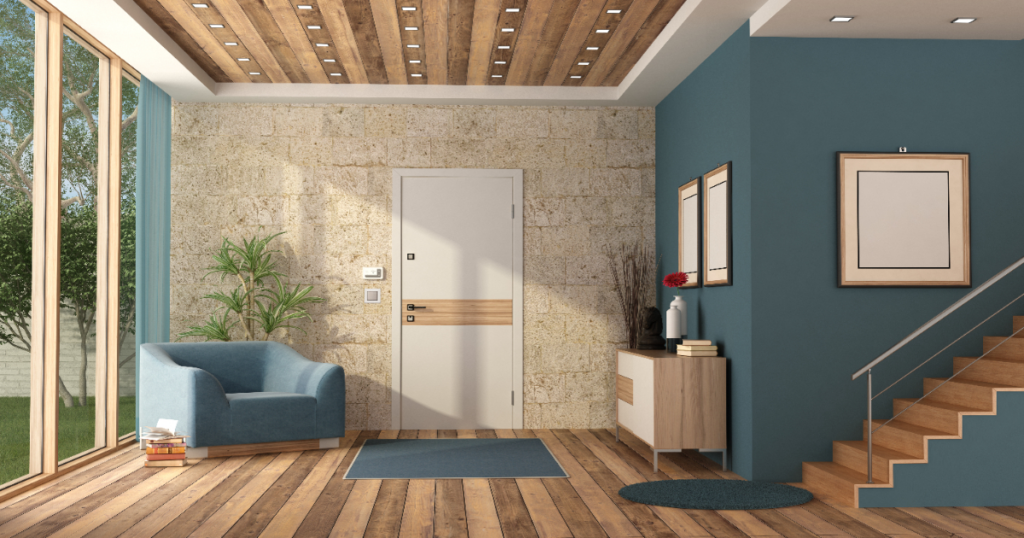
Benefits of Current Trends
Increase in Home Value
Modern remodeling, influenced by current trends, significantly boosts property value. Potential buyers often prioritize homes that reflect contemporary designs, viewing them as move-in ready. This appeal can lead to quicker sales and higher returns on investment for homeowners.
Enhanced Comfort and Functionality
Today’s remodeling trends prioritize user experience. Spaces are designed not just for visual appeal but also for practicality. Open floor plans, smart home integrations, and adaptive rooms cater to the dynamic needs of modern families, ensuring homes are not just beautiful but also highly functional and comfortable.
Reduction in Energy Costs with Sustainable Upgrades
Sustainability in home design isn’t merely an environmental choice; it’s also economical. Implementing energy-efficient appliances, insulation, windows, and other green solutions can substantially save utility bills. Over time, these savings can offset the initial investment in sustainable upgrades, making eco-friendly remodeling a responsible and cost-effective decision.
Tips for Homeowners Considering a Remodel
Setting Clear Goals for the Remodel
Before embarking on any remodeling project, homeowners should outline what they hope to achieve. Whether it’s increasing space, modernizing the design, or improving energy efficiency, having a clear vision ensures that the remodel aligns with the desired outcome.
Researching and Hiring a Reputable Contractor
A successful remodel heavily depends on the expertise of the contractor. Homeowners should conduct thorough research, seeking recommendations, reading reviews, and interviewing potential candidates. Hiring someone with a track record of quality work and reliability can distinguish between a dream remodel and a renovation nightmare.
Budgeting and Financial Considerations
Establish a realistic budget for the remodel. Homeowners should account for materials, labor, unexpected costs, and a contingency fund. Being financially prepared can prevent unnecessary stress and ensure the project stays on track without compromising quality.
Being Aware of Local Building Codes and Permit Requirements
Each locality may have specific building regulations and codes. Homeowners should familiarize themselves with these requirements or work with a contractor who is well-versed in them. Ensuring the remodel complies with local standards can prevent legal complications and additional costs.
Factoring in Potential Disruptions to Daily Life During the Remodel
Remodeling can be a disruptive process. From noise and dust to inaccessible areas of the home, homeowners should be prepared for some inconveniences. Planning alternative arrangements, such as setting up a temporary kitchen or scheduling work during vacations, can mitigate the impact of these disruptions on daily routines.
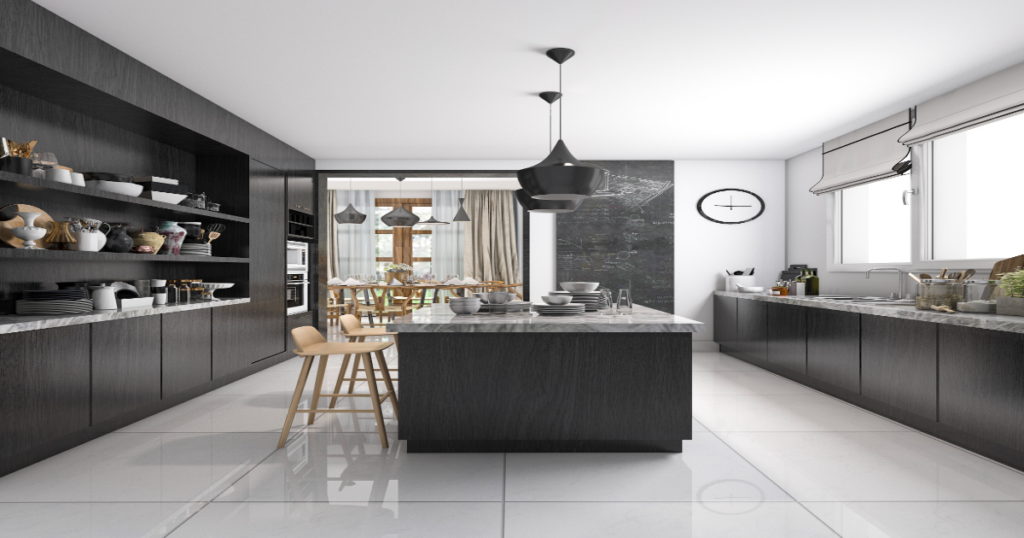
Predictions for Future Remodeling Trends in Orange County
The Growth of Multigenerational Living Spaces
As families become more intertwined and the costs of independent living rise, the demand for multigenerational homes is expected to surge. Future remodeling trends in Orange County might see homes with separate living quarters, adaptable spaces, and amenities catering to younger and older family members. This ensures privacy while promoting shared communal areas for family interaction.
Designs Promoting Health and Wellness
The increased focus on well-being and health is likely to permeate home design. Expect to see homes equipped with air purification systems, rooms designed for meditation or exercise, and the integration of natural elements. Materials that are hypoallergenic and promote good indoor air quality may become standard, ensuring homes are not just aesthetically pleasing but also health-enhancing.
Expansion of Home Office and Remote Workspaces
The recent shift towards remote work has made the home office a crucial part of residential design. In the future, Orange County homes may be remodeled to include dedicated workspaces with advanced tech integrations, soundproofing, and ergonomic designs. As the lines between work and home continue to blur, creating a productive and separate space for professional activities within the home will be paramount.
Orchestrating Tomorrow’s Homes Today
The horizon of Orange County’s home design landscape is evolving, shaped by both societal shifts and individual needs. As families grow closer across generations, homes are expanding to accommodate. A renewed focus on health intertwines with living spaces, transforming them into wellness sanctuaries. Moreover, the contemporary home isn’t just a dwelling but a dynamic workspace, reflecting our changing work paradigms. While rooted in present-day realities, these remodeling trends are crafting a vision for homes of the future—spaces that are adaptive, nurturing, and seamlessly integrated with our multifaceted lives.

Frequently Asked Questions
How Do I Choose a Reputable Contractor for My Remodeling Project?
Research is key. Seek recommendations, read reviews, verify credentials, and interview potential contractors. Viewing their past projects and speaking with former clients is also beneficial. Call us today.
Are There Local Regulations I Should be Aware of When Remodeling in Orange County?
Yes, Orange County has specific building codes and permit requirements. It’s advisable to familiarize yourself with these or hire a contractor knowledgeable about local standards.
How Can I Set a Realistic Budget for my Remodeling Project?
Start by getting estimates from multiple contractors. Factor in materials, labor, and potential unexpected costs, and always set aside a contingency fund for unforeseen expenses.
Is it Worth Integrating Smart Home Technologies During My Remodel?
Absolutely. Smart home integrations enhance convenience, improve security, and increase the value of your home. They also offer potential long-term energy savings.
How Do Changing Family Dynamics Influence Remodeling Trends?
As families evolve, so do their living needs. Multigenerational living or the need for adaptable spaces reflects the changing dynamics, influencing home design and remodeling trends.
Further Readings
Architectural History of Orange County












